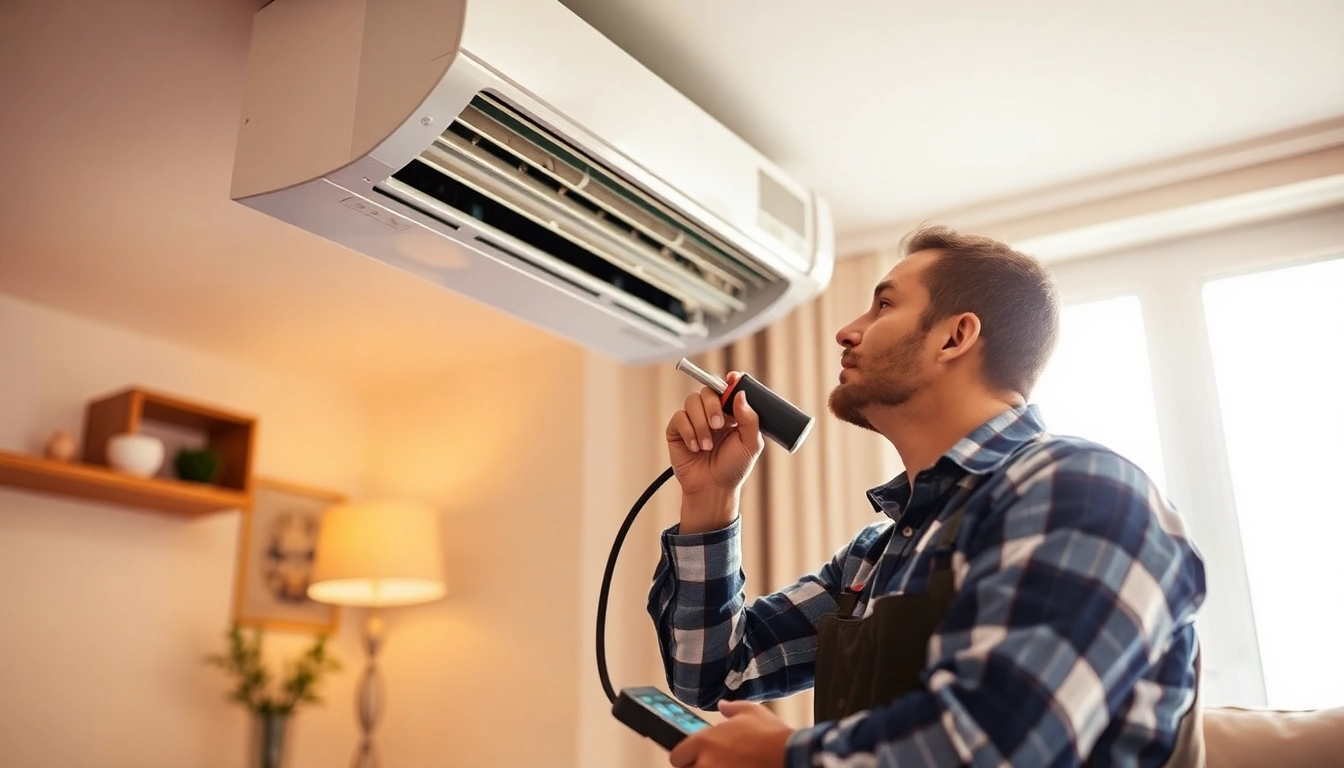Understanding Air Conditioning Systems
Air conditioning systems are crucial for maintaining comfort in residential and commercial spaces, especially during the sweltering heat of summer. Understanding how these systems work can aid homeowners and renters in troubleshooting common issues. One frequent problem users encounter is when their air conditioning is not blowing air, which can turn an otherwise comfortable environment into a sweltering one. This article aims to provide an extensive overview of air conditioning systems, diagnose airflow issues, identify causes, and offer solutions.
How Air Conditioning Works
Air conditioning systems operate by removing heat and humidity from indoor air, utilizing a refrigeration cycle that involves a refrigerant, a fluid that absorbs heat from the air inside and expels it outside. The process begins when the thermostat detects a temperature rise, signaling the system to activate. The refrigerant flows through the evaporator coils, absorbing heat and cooling the air that is then circulated through the ductwork, providing chilled air to the rooms.
Key Components of Your AC Unit
An understanding of your air conditioning system’s components can help pinpoint issues when problems arise. Here are the key parts:
- Compressor: The heart of the AC system, it compresses the refrigerant, raising its pressure and temperature.
- Condenser: Located outside, it cools the refrigerant, allowing it to change back to a liquid state.
- Evaporator Coils: Found indoors, they absorb heat and humidity from the air.
- Blower Fan: Circulates air over the evaporator coils and throughout the duct system.
- Thermostat: The control system that regulates the temperature in the space.
Common Air Conditioning Issues
There are several issues that can affect the functionality and efficiency of air conditioning systems:
- Refrigerant leaks
- Faulty thermostats
- Blocked drains
- Frozen evaporator coils
- Dirty air filters
Identifying the Problem: Air Conditioning Not Blowing
When an air conditioning unit is running but fails to circulate air, it can be a frustrating experience. Recognizing the indicators of a malfunctioning AC system is essential for timely intervention.
Signs Your AC Isn’t Functioning Properly
Some signs that your HVAC system may not be working effectively include:
- The air temperature at the vents doesn’t feel cool.
- You can hear the unit running, but there’s little to no airflow.
- Inconsistent temperatures in different rooms.
- Higher energy bills due to reduced efficiency.
Diagnosing Airflow Issues
Diagnosing the exact cause of airflow issues can be challenging. Check these common problems first:
- Verify if the air handler is running and producing noise.
- Listen for any strange noises, which could indicate a mechanical issue.
- Check the air vents for airflow discrepancies.
Checking Basic Settings and Components
Before diving deeper into repairs, ensure that:
- The thermostat settings are correct and not set to “off”.
- The unit’s breakers have not tripped.
- Ducts are not blocked or closed.
Major Causes of Air Conditioning Not Blowing Air
If you’ve checked the basic settings but the problem persists, there are several major causes to consider.
Clogged or Dirty Air Filters
One of the most common issues arising in HVAC systems is a clogged or dirty air filter. A dirty filter can obstruct airflow and lead to a range of problems, including frozen coils and reduced efficiency. Filters should be checked every month, especially during high-use seasons, and replaced every three months or when visibly dirty.
Blocked or Closed Vents
Blocked or closed vents can significantly restrict airflow. Ensure all vents are open and free from obstruction by furniture, drapes, or other items. Regularly check vents to ensure that air can flow freely throughout your home.
Faulty Thermostat Functionality
A malfunctioning thermostat can cause significant issues. If your thermostat isn’t accurately reflecting the temperature or has dead batteries, it may not signal the AC to start blowing air. Smart thermostats may require additional checks to ensure they are functioning properly.
Quick Solutions to Restore Airflow
In many cases, the solutions to airflow issues are straightforward and can be undertaken without professional assistance. Here are some quick fixes you can try:
Cleaning or Replacing Air Filters
Cleaning or replacing the air filters can often resolve airflow problems. Begin by turning off your AC unit, removing the filter, and either cleaning it (if reusable) or replacing it with a new one. This simple action can significantly improve airflow and efficiency.
Adjusting Vent Settings
Check that all vents are open and unobstructed. You might consider adding or adjusting vent covers to ensure a balanced airflow throughout your home.
Resetting Your Thermostat
If settings seem correct but issues persist, resetting the thermostat can sometimes clear up malfunctions. This process varies by model, so consult your thermostat’s user manual for instructions.
When to Call a Professional
While many problems can be handled by the average homeowner, there are times when professional assistance is necessary to resolve more complex issues effectively.
Identifying Major Mechanical Failures
If you suspect mechanical failure, like a broken compressor or a malfunctioning blower motor, it’s best to contact an HVAC technician. Symptoms include abnormal sounds, significant humming, or no sound at all from the system when it should be running.
Understanding When DIY Isn’t Enough
Identifying the signs of serious problems like refrigerant leaks or electrical issues requires expertise. DIY attempts in these situations can worsen problems or pose safety risks.
Finding a Trusted HVAC Technician
Always seek licensed and experienced HVAC professionals who can help diagnose and repair system issues. References, online reviews, and recommendations from fellow homeowners are valuable resources in finding reputable technicians.
